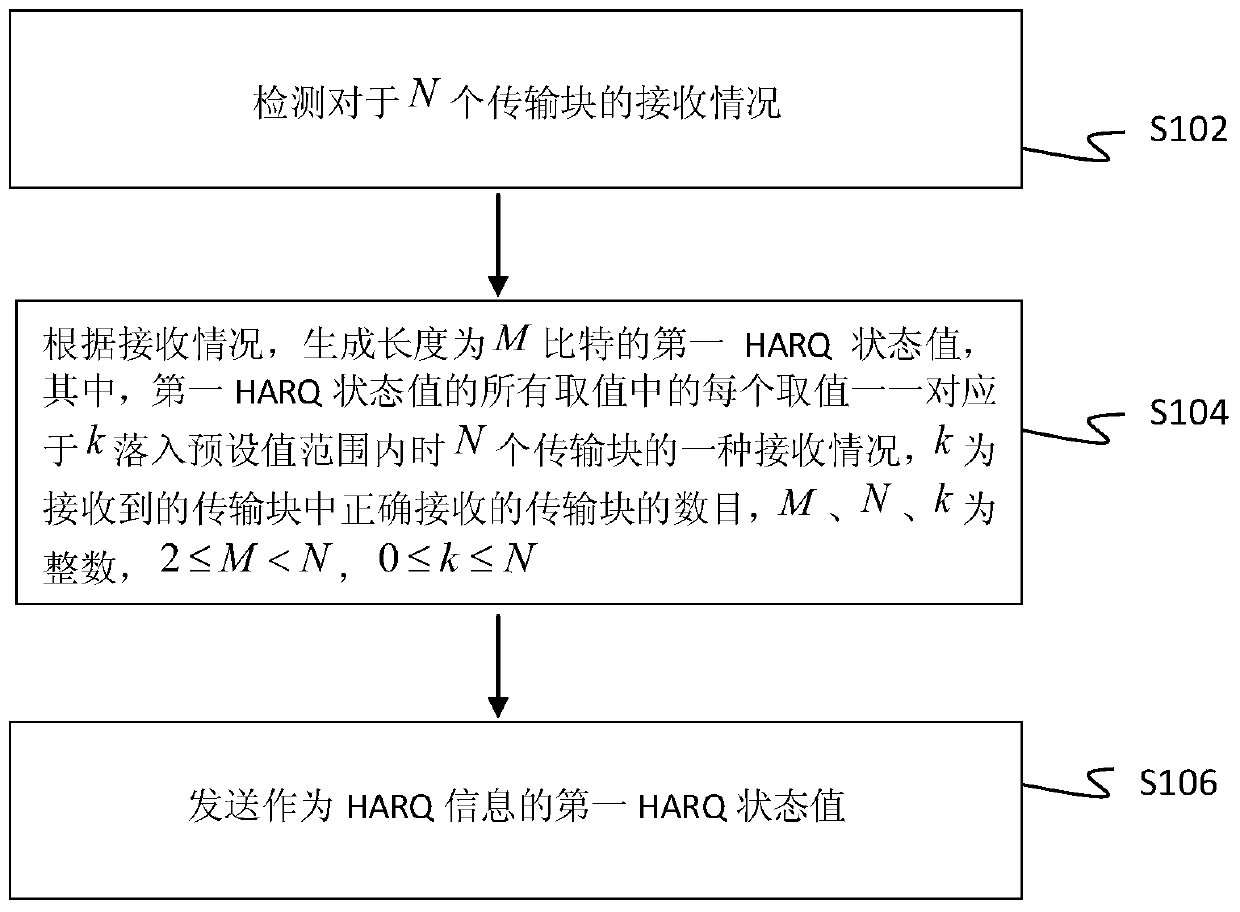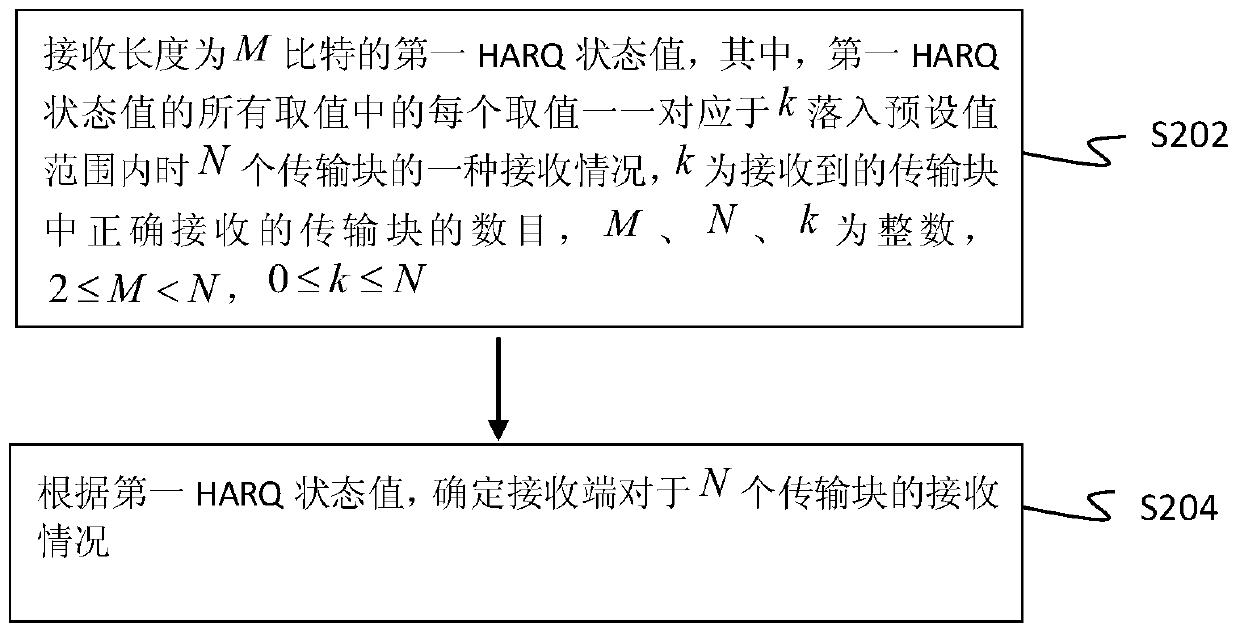Harq sending and receiving method, device and node
A sending method and technology of the sending end, applied in the field of communication, can solve the problems of downlink system throughput impact, no solution proposed, high HARQ information occupation overhead, etc.
- Summary
- Abstract
- Description
- Claims
- Application Information
AI Technical Summary
Problems solved by technology
Method used
Image
Examples
Embodiment 1
[0142] The terminal (node 1) and the base station (node 2) agree to use M bits to feed back the HARQ information of N transport blocks, where the N transport blocks can be respectively located on I carriers, and carrier i (i=1, 2...I The number of transport blocks on ) is Q i , Suppose the number of correct transmission blocks detected by the terminal is k, where M is a positive integer not less than 2, N is a positive integer not less than 3, and satisfies:
[0143] 1i ≤N; 0≤k≤N.
[0144] For the above k transport blocks that are detected correctly, according to the indexes in the above N transport blocks corresponding to these transport blocks, there are a total of In this case, considering 0≤k≤N, there are a total of situation.
[0145] In the preferred embodiment of the present invention, node 1 determines the corresponding HARQ state according to a threshold U, where U is a positive integer and satisfies The threshold U can be agreed upon by node 2 and node 1...
Embodiment 2
[0154] Based on the method 1 above, set N=32 and M=21. Normally, the base station determines the coded transmission resource and the corresponding coding and modulation mode for a certain transmission block with the probability p that the transmission block is detected correctly according to the channel state between the base station and the terminal. A typical value of p is 0.9. Assuming that the probability of correct detection of each transmission block is independent of each other, then the probability Y(k) that the terminal detects that k transmission blocks are correct is:
[0155]
[0156] Figure 8 A schematic diagram of the probability distribution of Y(k) is given when N=32 and p=0.9. from Figure 8 It can be seen that the probability distribution of the number of correct transmission blocks detected by the terminal is not uniform, but concentrated on a few values with a high probability. Figure 8 For example, the number of correctly detected transport block...
Embodiment 3
[0160] Based on the above method 2, the terminal (node 1) and the base station (node 2) agree to use M bits to feed back the HARQ information of N transport blocks. In this preferred embodiment, node 1 according to two thresholds U 1 and U 2 determine the corresponding HARQ state, where U 1 and U 2 (1≤U 1 ≤ U 2
[0161] Among them, the threshold U 1 and U 2 It can be agreed between node 2 and node 1, for example, node 2 determines U according to channel state information, scheduling strategy, etc. 1 and U 2 The value of is used to inform node 1 about U through signaling 1 and U 2 The value of , or both parties agree on U 1 and U 2 Equal to a value related to N, for example: U 1 and U 2 to satisfy And U 2 -U 1 The maximum corresponding value of .
[0162] When U 1 ≤k≤U 2 , each case corresponds to a HARQ state one by one (each state is represented by M bits, and the total situation). For other cases, total case with the rest One or more of the s...
PUM
 Login to View More
Login to View More Abstract
Description
Claims
Application Information
 Login to View More
Login to View More - R&D
- Intellectual Property
- Life Sciences
- Materials
- Tech Scout
- Unparalleled Data Quality
- Higher Quality Content
- 60% Fewer Hallucinations
Browse by: Latest US Patents, China's latest patents, Technical Efficacy Thesaurus, Application Domain, Technology Topic, Popular Technical Reports.
© 2025 PatSnap. All rights reserved.Legal|Privacy policy|Modern Slavery Act Transparency Statement|Sitemap|About US| Contact US: help@patsnap.com



